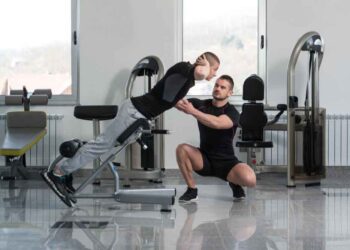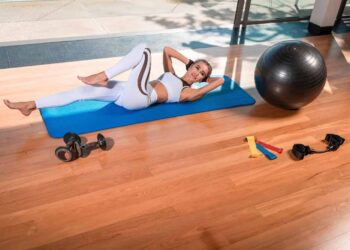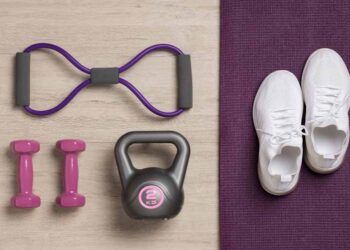When it comes to shoulder exercises, one movement has sparked a heated debate among fitness enthusiasts and experts alike. Are upright rows the ultimate shoulder shaper, or should they be avoided at all costs? The controversy surrounding upright rows is not only about their effectiveness in targeting the deltoids and upper back muscles. It also revolves around the potential risk of shoulder impingement. So, what’s the truth behind this controversial exercise? Let’s dive in and find out.
- Upright rows have long been a topic of debate in the fitness community.
- Some people believe they are great for targeting the shoulders, while others argue they can lead to shoulder impingement.
- Proper form and individual adaptability are crucial when performing upright rows.
- Upright rows can help strengthen the deltoids, upper back, and contribute to better posture.
- Approach upright rows with caution and listen to your body to prevent injury.
The Benefits of Upright Rows for Shoulders
Upright Rows can be a beneficial exercise for strengthening and sculpting the shoulders. When performed correctly, they target the deltoid muscles, specifically the anterior (front), lateral (side), and posterior (rear) heads, as well as the trapezius and rhomboid muscles of the upper back.
This exercise can help improve shoulder stability, enhance posture, and contribute to a balanced upper body development. By engaging multiple muscle groups, Upright Rows provide a comprehensive and efficient workout for the shoulders.
When executed properly, Upright Rows stimulate the deltoids to promote muscle growth and definition. The anterior head is responsible for raising the arm forward, the lateral head assists in lifting the arm to the side, and the posterior head aids in arm extension and shoulder abduction. By targeting all three heads, Upright Rows assist in achieving a well-rounded and proportionate shoulder appearance.
In addition to the deltoids, Upright Rows activate the trapezius and rhomboid muscles of the upper back. These muscles work in conjunction with the deltoids to support proper posture and shoulder movement. A strong upper back is essential for maintaining optimal shoulder health and preventing imbalances or injuries.
It is essential to use proper technique and avoid excessive weight or range of motion to prevent strain or injury to the shoulder joint. Gradually increasing the weight and difficulty level of the exercise over time can lead to progressive muscle development and improved overall shoulder strength and aesthetics.
Sample Table
| Muscle Group | Major Muscles | Secondary Muscles |
|---|---|---|
| Deltoids | Anterior (front) head | Lateral (side) head |
| Posterior (rear) head | ||
| Upper Back | Trapezius | Rhomboids |
Technique and Variations of Upright Rows
Performing Upright Rows correctly is crucial to maximize the benefits and minimize the risk of injury. Here’s a step-by-step guide on the proper technique:
- Stand with your feet shoulder-width apart, maintaining a stable and balanced stance.
- Hold a barbell or dumbbells in front of your thighs with an overhand grip, ensuring that your palms face toward your body.
- Engage your core and keep your back straight throughout the exercise.
- Begin the movement by lifting the weight. Raise your elbows towards the ceiling, keeping them close to your body and avoiding excessive swinging or jerking motions.
- Continue lifting until your elbows reach shoulder height. At the top of the movement, pause briefly to fully engage your shoulder muscles.
- Slowly lower the weight back down to the starting position, maintaining control and avoiding any sudden drops or jerks.
Remember to focus on maintaining proper form and using a weight that allows you to perform the exercise with control and without compromising your technique. Aim for a controlled tempo and avoid excessive swinging or jerking motions.
Variations:
While the traditional Upright Rows exercise is effective for targeting the shoulder muscles, there are several variations that can add variety to your workout routine and target slightly different muscle groups.
| Variation | Muscles Targeted |
|---|---|
| Wide-Grip Upright Rows | Focuses more on the outer head of the deltoids and provides a greater range of motion. |
| Narrow-Grip Upright Rows | Targets the inner head of the deltoids and increases emphasis on the trapezius muscles. |
| Cable Upright Rows | Offers constant tension throughout the movement and allows for unilateral or bilateral variations. |
| Dumbbell Upright Rows | Provides greater freedom of movement and activates stabilizing muscles. |
By incorporating these variations into your routine, you can target specific muscle groups, challenge your body in new ways, and prevent monotony in your workouts.
Safety Tips for Upright Rows
Performing Upright Rows can be a highly effective way to target and strengthen the shoulder muscles. However, it is crucial to prioritize safety to avoid any potential risks or injuries. Here are some important safety tips to keep in mind when performing Upright Rows:
- Warm Up: Before starting your Upright Rows, it is essential to warm up your entire body, specifically focusing on the shoulders and upper back. Performing dynamic stretches and mobility exercises can help prepare your muscles for the exercise ahead.
- Proper Technique: Maintain proper form throughout the exercise to prevent strain or injury. Start with a comfortable weight and lift with control, keeping your elbows close to your body. Avoid using excessive weight or swinging the weight up, as this can put unnecessary stress on the shoulder joints.
- Monitor Range of Motion: Be mindful of your range of motion to avoid overstretching the shoulder muscles. Lift the weight until your elbows reach shoulder height and avoid lifting beyond this point. If you experience any discomfort or pain, adjust the range of motion accordingly.
- Listen to Your Body: Pay attention to any signs of discomfort or pain during the exercise. If you experience sharp or prolonged pain, it is important to stop immediately and consult with a medical professional or fitness instructor. Your safety and well-being should always be a top priority.
- Progress Gradually: If you are new to Upright Rows or have not performed them regularly, start with lighter weights and gradually increase the load as your strength and technique improve. This will give your muscles time to adapt and minimize the risk of overuse or injury.
The Controversy Surrounding Upright Rows
The controversy of Upright Rows has sparked a lively debate within the fitness community. Opposing views on the exercise’s safety and potential for shoulder impingement have led to conflicting opinions and recommendations. Some experts caution against Upright Rows due to concerns about excessive stress on the shoulder joint, particularly for individuals with pre-existing shoulder issues. On the other hand, proponents argue that when performed correctly and adapted to individual needs, Upright Rows can be a safe and effective exercise for shoulder development.
Those who advise against Upright Rows often point to the potential for shoulder impingement caused by a narrow grip or excessive weight, leading to discomfort or injury. They argue that the exercise places the shoulder joint in an awkward position, which may increase the risk of impingement. This controversy has fueled discussions about the optimal technical execution of Upright Rows and whether certain variations can mitigate the potential risks.
In contrast, proponents of Upright Rows suggest that by using proper form and technique, individuals can perform the exercise safely and benefit from its shoulder-targeting effects. They highlight the importance of maintaining a wider grip, consciously retracting the scapulae, and avoiding excessive weight that compromises form. These proponents emphasize that Upright Rows can effectively engage the deltoids and upper back muscles while contributing to overall upper body strength and stability.
Expert Insights
“The debate surrounding Upright Rows largely centers around understanding individual biomechanics and applying proper form. While it can be a valuable exercise for shoulder development, it’s crucial to listen to your body and adapt the exercise to your unique needs and capabilities.”
– Dr. Amelia Adams, Sports Medicine Specialist
Ultimately, the controversy surrounding Upright Rows highlights the importance of considering individual factors when incorporating the exercise into a training routine. It is advisable for individuals with previous or ongoing shoulder issues to consult a qualified fitness professional or physical therapist for guidance on proper technique and modifications. By doing so, one can make an informed decision regarding the inclusion of Upright Rows in their workout regimen.
| Pros | Cons |
|---|---|
| Target the deltoids and upper back muscles effectively | Potential for shoulder impingement, especially with improper form |
| Contribute to shoulder stability and posture improvement | Risk of discomfort or injury, especially for individuals with pre-existing shoulder issues |
| Aid in upper body strength and development | Execution and grip variations can lead to varying degrees of safety |
Conclusion
After delving into the controversy surrounding Upright Rows, it is clear that this exercise has generated mixed opinions within the fitness community. While some experts raise concerns regarding potential shoulder impingement, others believe that Upright Rows can be performed safely and effectively with proper form and technique.
When considering Upright Rows for shoulder development, it is crucial to exercise caution and prioritize individual adaptability. Start with lighter weights, focus on maintaining proper form, and be attentive to your body’s cues. Gradually increase the weight and intensity as you feel comfortable, always aiming for controlled and smooth movements.
Ultimately, Upright Rows can play a role in enhancing shoulder strength and shape. However, it is important to approach this exercise with knowledge and mindfulness. By taking the necessary precautions and listening to your body, you can harness the potential benefits of Upright Rows while minimizing any associated risks.













